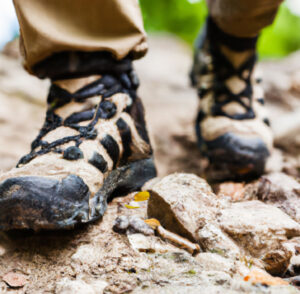The Importance of Leave No Trace While Enjoying the Great Outdoors
Spending time outdoors is a great way to connect with nature, escape the hustle and bustle of daily life, and recharge your batteries. But as much as we love being outside, it’s important to remember that we are visitors in the natural environment. Our actions can have a significant impact on the ecosystem, so it’s crucial that we do our part to minimize that impact by following Leave No Trace principles.
What are Leave No Trace Principles?
One way to achieve this is by following the Leave No Trace principles. These are a set of guidelines designed to help us reduce our impact on the environment while we enjoy it. By following these principles, we can ensure that future generations can continue to enjoy the natural beauty of our planet.
Plan Ahead and Prepare
The first Leave No Trace principle is to plan ahead and prepare. This means doing your research before embarking on your outdoor adventure. Familiarize yourself with the area you’ll be visiting, including any rules or regulations that apply. Make sure you have the necessary permits and equipment, such as a map, compass, and first aid kit. Planning ahead can help you avoid potential problems and minimize your impact on the environment.
Travel and Camp on Durable Surfaces

The second principle is to travel and camp on durable surfaces. This means avoiding fragile or pristine areas such as meadows or wetlands. Instead, choose a durable surface such as established campsites, rock, gravel, or dry grasses. Walking and camping on durable surfaces can help prevent soil erosion, which can damage the ecosystem.
Dispose of Waste Properly
The third principle is to dispose of waste properly. This is a crucial principle because improperly disposed of waste can cause contamination of water sources and harm wildlife. Pack out all your waste, including food scraps and personal waste. If you need to dispose of human waste, dig a hole that is at least 6 to 8 inches deep and 200 feet away from water sources. Always pack out any toilet paper or hygiene products. Proper waste disposal can help keep the natural environment clean and protect the health of animals and humans.
Leave What You Find
The fourth principle is to leave what you find. This means leaving natural and cultural features in their natural state. Do not remove or disturb any natural or historic artifacts, such as rocks, plants, or cultural artifacts. These features are part of the natural and cultural history of the area, and should be left for others to enjoy. Take only photos and memories as a memento of your visit.
Minimize Campfire Impact
The fifth principle is to minimize campfire impact. Campfires can cause damage to the environment and wildlife habitats. If possible, use a stove for cooking instead of building a fire. If building a fire, use established fire rings or fire pans, keep fires small, and only use dead and downed wood. Be sure to completely extinguish fires before leaving the area.
Respect Wildlife
The sixth principle is to respect wildlife. When spending time outdoors, it’s important to remember that we are visitors in the animals’ natural habitat. Do not feed or approach wildlife, and always give them plenty of space. Avoid making loud noises or sudden movements that can startle or harm animals. Be respectful of their space and remember that they are an important part of the natural environment.
Be Considerate of Other Visitors
The seventh and final principle is to be considerate of other visitors. The natural environment is meant to be enjoyed by all. Be considerate of others by being quiet and respectful of their space. Yield to others on the trail, respect their privacy, and follow any rules or regulations in the area. By being considerate of others, we can all enjoy the natural environment to the fullest.
We are Visitors in the Natural Environment – Leave No Trace
By following these Leave No Trace principles, we can minimize our impact on the environment and ensure that future generations can enjoy the natural beauty of our planet. Whether you’re hiking, camping, or simply enjoying a picnic, these guidelines can help us make the most of our time outdoors while respecting the environment. Remember, leave only footprints, take only memories, and leave the natural world in its natural state for all to enjoy.
